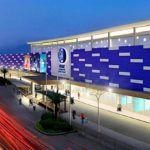
HSBC sees remittances, FDI as key to PHL economy’s resilience
By Janine Marie D. Soliman
Posted on January 18, 2017
http://www.bworldonline.com/content.php?section=Economy&title=HSBC-sees-remittances,-FDI-as-key-to-PHL-economy%E2%80%99s-resilience&id=139267
THE equities market, peso and the overall economy will remain resilient this year despite global market uncertainties, according to the Hong Kong and Shanghai Banking Corp. (HSBC), with the bank factoring into its projections strong remittances, foreign direct investment and robust domestic consumption.
In a media briefing on Tuesday, Cheuk Wan Fan, Managing Director and Head of Investment Strategy in Asia for HSBC, said that its growth projection for the Philippine economy “will remain robust” with the bank’s real gross domestic product (GDP) forecast at 6.5% for 2017, higher than the bank’s July estimate of 6.3%.
It has a “neutral allocation” for Philippine equities due to valuation concerns. As such, its model portfolio does not assign the Philippine stocks overweight status.
“In Asia… the Philippines is another domestic-driven economy that we like, given the relatively rich valuation of the Philippine stock market. So currently, we have a neutral allocation to Philippine equities within our Asia equity portfolio but we think that domestic growth momentum in the country will remain robust. 6.5% real GDP growth for 2017,” Ms. Fan said.
“We expect continue strong remittance inflow and robust domestic consumption will be the key supportive driver for Philippine equity market. So within our neutral position in Philippine equities, we favor property, infrastructure and consumption sectors,” she added.
Asked how much earnings growth the bank projects for regional and Philippine equities, Ms. Fan said that HSBC anticipates earnings in local equities to grow around 7% this year, lower than the regional average of 13% on an earnings per share [EPS] basis.
“So the earnings growth delivered by the Philippine market would lag behind some of the higher-growth countries in the region,” she said, adding that India, Indonesia and China markets will post the highest EPS growth.
“I think for the Philippine market we anticipate around 7% earnings growth mainly because of our expectation of a moderate slowdown in industrial production growth,” Ms. Fan noted.
Ms. Fan noted that “the key growth driver for the local stock market will be the infrastructure and construction related sector.”
Meanwhile, the bank’s foreign exchange forecast for the peso is now P49.5 to the dollar by year’s end compared to its P50.70 — estimate from November 2016.
“We forecast the Philippine peso to trade P49.5 to the US dollar by end of the year, relatively resilient compared to other emerging-market Asian currencies mainly supported by robust remittance inflow, and steady FDI (foreign direct investment) inflow,” Ms. Fan said.
Ms. Fan noted that HSBC expects the dollar to ease by the second half of the year due to a drop in US bond yields, to which they expect the US 10-year treasury yield to come down the 1.35% level by the second half of the year.
Both easing in the dollar and bond yields “would also provide a supportive external environment” for Asian equities and bond markets, Ms. Fan added.
However, she noted that, “The most important fundamental driver to support performance of Asian markets is mainly domestic factors.”
“In the current uncertain global environment, we would position in domestic demand-driven and reform-oriented markets. Within Asia we are currently overweight China, India, Indonesia as these markets are expected to stay relatively resilient to the external uncertainties,” she noted.
The bank also expects the Federal Reserve to “maintain a cautious monetary policy,” with two interest rate hikes at most at 25 basis points each time, at around June and December.









